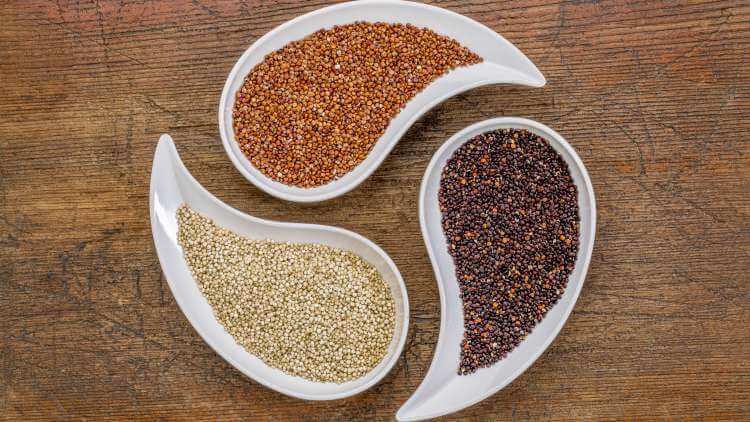
Can quinoa really damage your stomach lining?
Quinoa, (pronounced “keen-wah”) has soared in popularity with foodies over the last few years. A wheat free alternative to more commonly used starchy grains, it’s a superfood in all senses of the word.
Benefits of quinoa:
- Contains six grams of protein per cup; more than any other grain.
- Contains all nine essential amino acids, including lysine, which is rare for a plant food. Lysine plays a key role in muscle recovery after intense physical activity.
- Is high in a number of different minerals including iron, phosphorus, manganese, and copper.
- Is packed with 2.5 grams of fiber per serving, helping you feel fuller for longer.
- Improves insulin control, slowing the rate at which sugar is released into your bloodstream. This can help reduce cravings.
Of course, there are many more benefits to quinoa than just those named above. With this in mind, it’s no surprise that so many smart dieters incorporate quinoa into their meal plan.
But is quinoa really as safe and beneficial as it seems?
The danger of quinoa
Is quinoa bad for you? Some people claim that quinoa can cause health issues. This originates from the fact that quinoa contains chemicals called saponins. Saponins are naturally occurring phytochemicals that coat the outside of unwashed quinoa, giving it a bitter taste. Saponins serve an important purpose when quinoa is still growing: they deter pests from eating it. However, when consumed by humans, they can pose a risk.
Saponins are well-known digestive irritants. Some people believe they can cause small holes in the intestinal lining, in effect creating a leaky gut – and that’s something you certainly don’t want.
Leaky gut is a condition in which toxins, undigested food particles, and other small substances in the body can pass through the gut into the bloodstream, wreaking havoc on various bodily structures.
For some, saponins may cause mild symptoms such as gas, bloating, or diarrhea. But some people believe that the consequences could be more severe, especially over time and especially for people with a quinoa allergy. Therefore, if you’re going to incorporate quinoa into your healthy eating routine, it’s important to do so in a safe way.

How to rinse quinoa to remove saponins prior to consumption
If you’re a quinoa addict, don’t panic, all is not lost! You don’t have to eliminate quinoa from your diet because of saponins. You just need to make sure you remove them during the cooking process.
To remove saponins safely and effectively, simply give it a good rinse prior to cooking. While cooking, it’s easy to tell whether you’ve removed all the saponins. As a general rule of thumb, frothy water when you cook quinoa is an indication that some still remain. If this happens, simply use clean boiling water to rinse through the quinoa once again, much like you would with rice.
Quinoa isn’t deadly; you just have to handle it properly
As smart dieters, we’re used to washing salad, rice, fruit and vegetables to prevent health issues, so it’s really no biggie that quinoa needs a good rinse prior to use too. Besides, the health benefits far outweigh the mild inconvenience.
Quinoa can be used in so many ways to add a nutritional boost to your meals. In fact, if you don’t have some in your cupboard right now, you’re seriously missing out!
Quinoa can be used to make:
- Soups
- Casseroles
- Gluten-free baked goods
- Salads
And much more!
What’s your favourite quinoa recipe? We’d love to hear about it in the comments below!
Recommended reading: L-carnitine weight loss benefits >>




